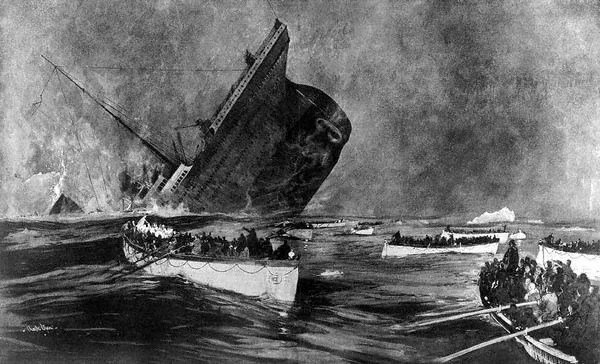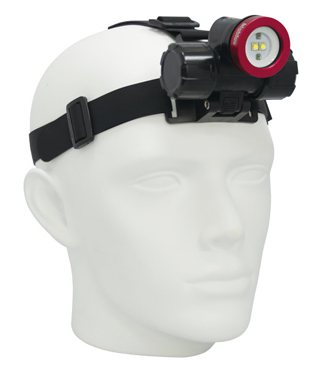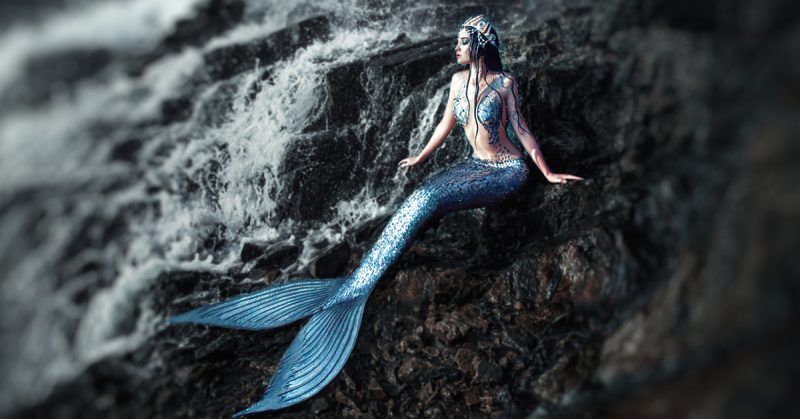This is how we configure our regs on a set of doubles:
Right post (as you wear them):
- Longhose
- Wing inflator
Left post (as you wear them):
- Pressure gauge (far right in pic)
- Backup reg (next to pressure gauge)
- Optionally drysuit (shallow diving)
Why?
The one thing that decides where the rest must go is the longhose.
When we share gas we donate our longhose. The hose is a longhose because we have to be able to share gas with the receiver swimming in front and the donator behind him. If we do this for instance in a cave or other tight spot we have the possibility of rolling our valves against the roof of the cave. In this case the left post will roll off and the gas will be shut off but the right post will only roll on so it will stay on. Because the right post can’t roll off and create more problems in a serious situation we have the long hose on our right post.
Since the long hose is on the right post we need to have our backup reg, which hangs in a bungee cord around our neck on the left post. Otherwise we would not have any redundancy which is the purpose of two regs and a double tank in the first place. Read more about when to use doubles and single tanks here .
The wing goes on the right post because of similar reasons why we put the longhose there. If we pass a tight spot and roll off the post with the wing inflator we don’t want to find this out by sinking into the silt unable to inflate. This should however not really happen since standard procedure is to always check your valves when there is a possibility that the valves have touched the ceiling. Another reason, which is my favorite, is when you dive in cold water and your inflator mechanism freezes in the open position you can just dump your gas with your left hand while shutting down the post with your right. It’s very effective and I’ve seen this done for real on several occasions.
Since we have our wing on the right post we put our drysuit on the left, unless we are using a separate drysuit bottle. Actually using a separate bottle is necessary when having a helium based breathing gas in your doubles and personally I prefer to use a drysuit bottle all the time. Then I can also use argon which is better due to it’s lower thermal conductivity.
The last thing is the pressure gauge which we put on the left post. The reason for that is simply because it’s easier to have it there as it wont be in the way of the longhose when we have to donate that. Another reason is when you are scootering you are using your right hand to scooter so you can unlip your pressure gauge and look at it without stopping or slowing down.
Finer points
As you can see in the pictures I use Apeks DS4 first stages which are good reliable regs. Apeks together with Scubapro is probably what you see most tech DIR guys use.
I angle the DS4s to take the strain off the HP hose going to your pressure gauge and the longhose. How much angle needed depends on your tanks and valves. In the pictures they are rigged on a set of double 12 liter tanks which are small doubles compared to a set of double 18s or PST 104s.
Also notice on the right post that I use the back LP port to run the longhose. That gives the longhose a natural tendency to stay behind the wing.
On some wings, like the circular Evolve from Halcyon, you might have to route the longhose OVER the wing instead of behind it – if you do use the other port. The reason one might have to go over the wing instead of behind it is because the longhose won’t stay behind the wing which actually depends on how far your light canister extends down. I always run it behind the wing and never had a problem.
On the left post the drysuit hose sticks out a bit. It’s not a problem in real life but I still prefer to use that port for drysuit hoses and other stuff (like the blow gun I attach when I teach) and keep the backup reg on the other LP port.
On the picture above notice how the backup reg is run under the inflator hose. And also that I tuck the wing in under the HP hose because when I wear the rig everything will be pressed up against the cylinders. Now those hoses can lay nice and have smooth bends.
Hose lengths
As short as possible but with no decrease in functionality! (OK, how much did that help you?)
The long hose needs to be 7ft, 2.10m. For taller people like myself (195cm/6’5″) you may need to add a few inches to that. Shorter people may want to have a shorter longhose but should be very careful with this as they may need to share gas with a longer person swimming in front of them.
The backup reg needs to long enough so you can look to your left in the water. That is usually around 24″ but depends on what first stages you have and how big/small your are. A custom hose length may be necessary. If the hose is too long it will drop down over you right arm and usually be in the way of your right chest d-ring.
The wing inflator hose needs to go from the right post straight to the corrugated hose and run on the side closest to you. A 24″ hose here is also usually fine.
The drysuit hose is run from the first stage down, under your left armpit, under the harness and to the inlet valve. Too short is a pain in the ass. The hose that comes with the drysuit is usually fine. Think it is a 36″ hose but try with the one you have and see if it fits. If you use an argon bottle you need a shorter hose.
The HP hose for the pressure gauge needs to be long enough so you can operate it easily. Usually 24″ is perfect but sometimes you may need slightly longer or shorter. Many people have tendency to use a too short hose here in their excitement to make everything is slick as possible so be aware of that. I use a 25″ hose.
When measuring hoses most people don’t know how to do that. Staying consistent with what is used in the hydraulic and pneumatic industry means that you measure from sealing surface to sealing surface on the assembled hose. So the threads are not measured on the barb and the length of the hose is longer than what the manufacturer cuts the hose itself when they assemble it.
But this doesn’t matter much as the hoses from different sources have different lengths even if they are supposedly the same. Also length differences between different batches from the same manufacturer can occur. If you mail order make sure you can return the hose if it’s really wrong. I usually buy mine in the dive shop so I can try it myself. Same thing with boltsnaps. Some are good and some are really bad but if you can try them first you can just get the good ones and leave the rest to everybody else.
Summary
This how we configure our regs on the doubles. Everybody is expected to have it the same way and with the proper hose lengths.
Most common mistakes for those preparing to take tech or cave training is using a too long hose for the backup and a too long HP hose unless they know it suppose to be shorter.
Have fun!
Peter Steinhoff
Sweden
Reprinted with permission::::http://dir-diver.com/en/equipment/reg_config_doubles.html










Leave A Comment